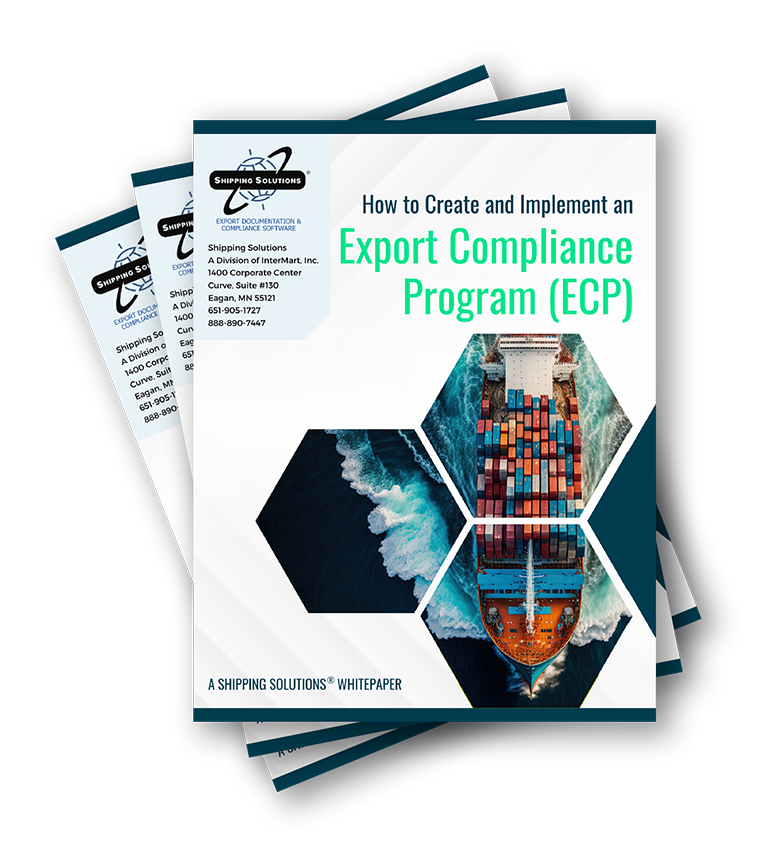The International Trade Blog Export Compliance
Surviving an Export Compliance Audit: 3 Key Steps
On: September 26, 2018 | By:  David Noah |
5 min. read
David Noah |
5 min. read
 Are you ready and waiting for your next export compliance audit?
Are you ready and waiting for your next export compliance audit?
“Now, that’s a dumb question,” you might be thinking. “No one wants—much less eagerly awaits—the imposing entry of Office of Export Enforcement officials into their offices.”
And of course, you’re right! While you certainly don’t look forward to an export compliance audit, it’s absolutely something you should prepare for.
People don’t plan for the bad situations that happen to them. However, something we learn from an early age is that when we do actually sit down and write out a plan for the bad things that may (or may not!) occur, we have greater peace of mind.
Things like fire drills, weather disaster plans, and CPR training all give us a plan to follow in case of emergency, an idea of what we can expect in the midst of upheaval, and options for next steps. Similarly, creating a plan before an export compliance audit gives you the same benefits: keep control of your company, limit chaos, and ultimately ride out the audit with limited (or no) damages.
All exporters and their staff need to discuss a plan detailing what you will do if you are audited. Here are three important questions you need to answer in your plan:
1. Who should be notified in case of an export audit?
The following people should be notified immediately (both internally and externally) if you are audited. Depending on your company’s structure, you may have additional personnel who need to be added to this list, or one person may fill several of these roles. Make sure you link names to job titles, so everyone in your organization knows what their responsibilities are.
- Legal counsel: You will need your lawyer to get to your office ASAP. Make sure this person is one of the first—if not the very first—person who is notified. If you don't have legal counsel on retainer, find and hire an attorney who you trust to represent you if necessary. While it may cost you financially in the short-term, an attorney could potentially save you a great deal of money—as well as headaches—in the long term.
- Export Compliance manager: The person who manages your office’s day-to-day export compliance efforts should be notified immediately. You’ll want this person in the room to answer questions quickly about your business’s compliance processes and records.
- Export manager: Along with the compliance manager, you should notify the export manager. This person will be able to provide files, documentation, receipts, correspondence and anything else the auditors request.
- Company president or CEO, general manager, or corporate leader: If your office belongs to a larger corporation, make sure you include a plan to notify those in charge at your company headquarters. In smaller organizations, ensure top-level staff are notified immediately.
As you plan, keep in mind that you shouldn’t just jot these names down. It’s wise to create an easily accessible In Case of Audit file, where you clearly state the order in which these parties need to be contacted, their phone numbers, and their email addresses (as well as any other information, like names of their administrative assistants, if applicable, and their contact information).
2. Where are your export documents located or stored?
In case of an export compliance audit, you must be able to find all pertinent documents related to any export transaction from the last five years at a moment’s notice. The Office of Export Enforcement will not make an exception for you just because you tell them you’ve stored the older files 300 miles away. In fact, doing that will only illustrate that you’re ignoring best practices and not adhering to regulations.
Before an audit ever occurs, your office should discuss how you’re going to store your export documentation and where it will be kept locally (ideally in your office or warehouse). You can find out more about how to implement document-related best practices at your office in our article, 10 Time-Saving Tips for Creating and Organizing Your Export Documents.
Not having your export documents close at hand would be a disaster in case of a real export compliance audit, so make it a point to ensure multiple members of your team can account for paperwork starting today.
Some of the key documents you should be able to locate quickly include:
- Your company’s export policy and procedure manual.
- Copies of your export documents: invoices, packing lists, bills of lading, country of origin certificates, etc. (You can access free versions of these forms here.)
- If any of your items require an export license, all documentation associated with that license and proof that you are following the terms of the license.
- Proof that you completed your company's export controls procedures including denied party screening (restricted party screening), export license determination, etc.
- Export transaction receipts, including files, notes and correspondence.
3. How does the audit plan fit into your Export Compliance Program?
Ideally, your export compliance audit plan should be just one part of a larger Export Compliance Program (ECP) that reduces risk of export controls violations and provides:
- Structure, organization and accountability;
- Consistent compliance;
- Procedures and tools to ensure accuracy; and
- Training and awareness.
The Bureau of Industry and Security (BIS) has several resources available to help you create an ECP. Here are a few:
- Export Compliance Guidelines: Elements of an Effective Export Compliance Program (PDF)
- Attend a BIS-hosted seminars on creating a ECP plan. Their current seminar schedule is available on their website.
- Submit your ECP plan to BIS for review and suggested improvements.
Your written manual is the basis of your compliance training program and provides a map for employees to follow. Similarly, your export compliance audit plan is an important subset of that plan that goes into even greater detail.
By including pertinent policies and step-by-step procedures, you'll prepare your company and employees for the unknown and feel confident in your process should you ever be subject to an export compliance audit.
This article was first published in May 2015 and has been updated to include current information, links and formatting.
Like what you read? Subscribe today to the International Trade Blog to get the latest news and tips for exporters and importers delivered to your inbox.

About the Author: David Noah
As president of Shipping Solutions, I've helped thousands of exporters more efficiently create accurate export documents and stay compliant with import-export regulations. Our Shipping Solutions software eliminates redundant data entry, which allows you to create your export paperwork up to five-times faster than using templates and reduces the chances of making the types of errors that could slow down your shipments and make it more difficult to get paid. I frequently write and speak on export documentation, regulations and compliance issues.



